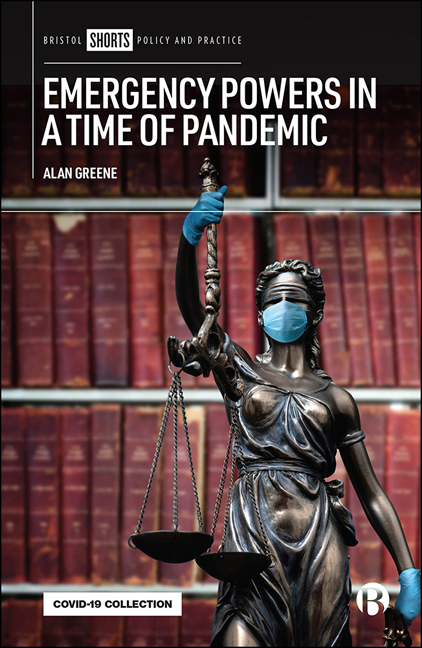Book contents
- Frontmatter
- Contents
- Notes on the Author
- Acknowledgements
- Introduction
- One The Pandemic State of Emergency
- Two Pandemics and Human Rights: Non-Derogable Rights
- Three Pandemics and Human Rights: Derogable Rights
- Four Pandemics and Democracy
- Five The End of the Pandemic Emergency
- Six Conclusions: Breathing Space
- Index
One - The Pandemic State of Emergency
Published online by Cambridge University Press: 12 March 2021
- Frontmatter
- Contents
- Notes on the Author
- Acknowledgements
- Introduction
- One The Pandemic State of Emergency
- Two Pandemics and Human Rights: Non-Derogable Rights
- Three Pandemics and Human Rights: Derogable Rights
- Four Pandemics and Democracy
- Five The End of the Pandemic Emergency
- Six Conclusions: Breathing Space
- Index
Summary
Introduction
On 12 March 2020, the World Health Organization (WHO) declared ‘coronavirus disease’ (COVID-19) a pandemic. COVID-19 is caused by the novel coronavirus SARS-CoV-2 and induces the primary symptoms of a fever, dry cough and tiredness. It can also include other symptoms, such as aches and pains, a sore throat, conjunctivitis and headaches, to name but a few. While most cases of COVID-19 are considered to be a ‘mild to moderate respiratory illness’ and patients will recover without requiring special treatment, in certain instances, notably among the elderly and those with underlying health conditions, COVID-19 can develop into a serious illness, triggering conditions like pneumonia which require specialist hospital treatment. At its most extreme, it can kill. At the time of writing, in June 2020, COVID-19 has caused the deaths of approximately 500,000 people worldwide. This figure should be viewed with caution, however, as not every death caused by COVID-19 will be attributed as such.
The scale of the COVID-19 pandemic triggered many countries to declare a state of emergency. Indeed, as we shall see, there is a strong case to be made that in recent decades, this is the closest we have come to an ‘ideal’ state of emergency – a perfect storm that legal states of emergency were designed to confront. Yet despite this, not every country responded in this way or enacted powers expressly labelled as ‘emergency powers’. The purpose of this chapter is to explore why this is.
I start by briefly outlining the theory behind emergency powers and the consequences that this theory has for fundamental constitutional values such as democracy, human rights and the rule of law. I then look at how pandemics can trigger emergency responses from the state, and discuss whether or not this is a good thing from a constitutionalist perspective – the idea that all state power should be exercised lawfully and in accordance with the values espoused by its constitution. This leads into a more detailed discussion of the human rights implications of pandemics in Chapter Two (Pandemics and Human Rights: Non-Derogable Rights) and Chapter Three (Pandemics and Human Rights: Derogable Rights), and the impact on democracy in Chapter Four (Pandemics and Democracy).
- Type
- Chapter
- Information
- Emergency Powers in a Time of Pandemic , pp. 7 - 34Publisher: Bristol University PressPrint publication year: 2020

